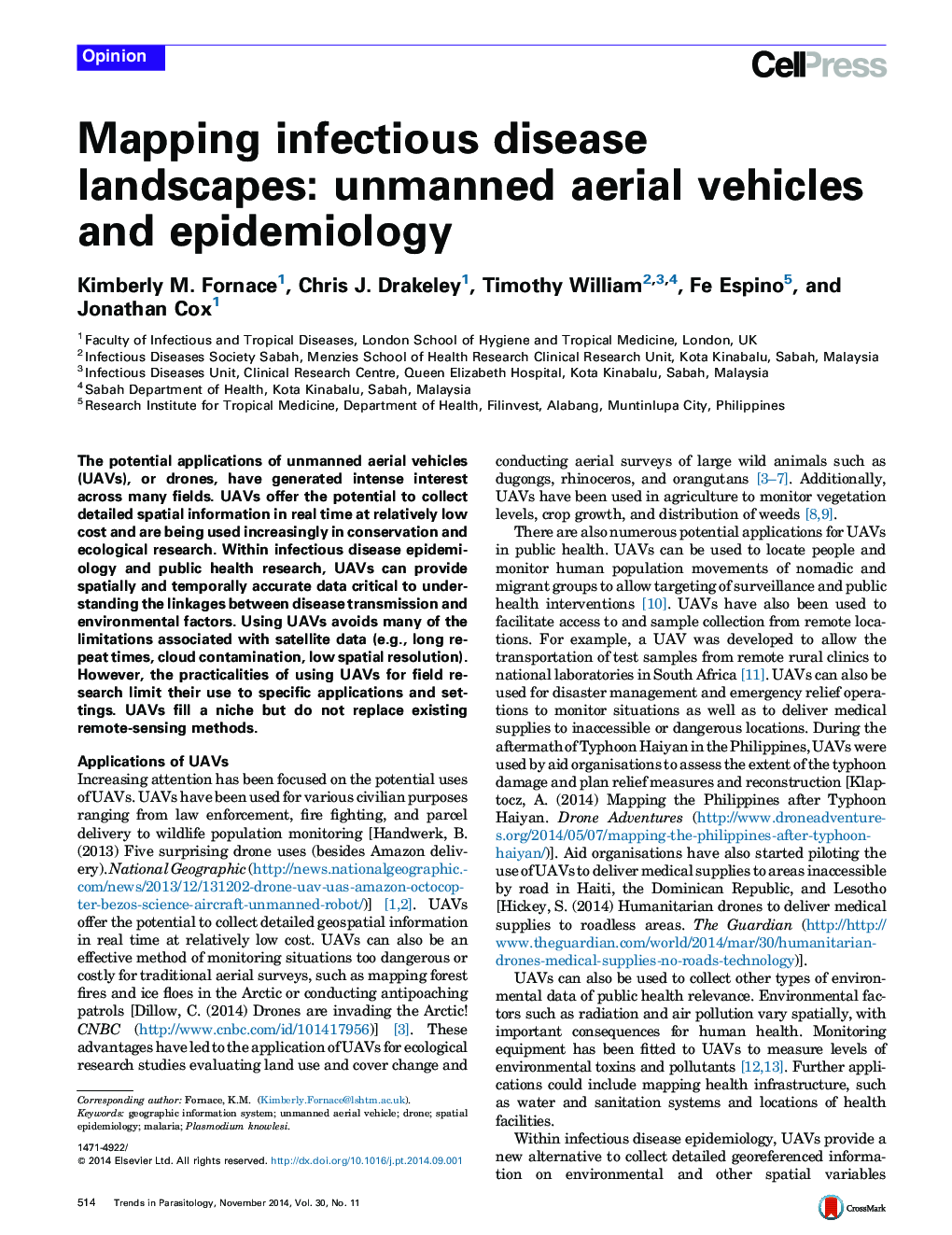| Article ID | Journal | Published Year | Pages | File Type |
|---|---|---|---|---|
| 3423033 | Trends in Parasitology | 2014 | 6 Pages |
•UAVs represent a unique source of spatial data for infectious disease epidemiology.•The practicalities of using UAVs limit their application to specific situations.
The potential applications of unmanned aerial vehicles (UAVs), or drones, have generated intense interest across many fields. UAVs offer the potential to collect detailed spatial information in real time at relatively low cost and are being used increasingly in conservation and ecological research. Within infectious disease epidemiology and public health research, UAVs can provide spatially and temporally accurate data critical to understanding the linkages between disease transmission and environmental factors. Using UAVs avoids many of the limitations associated with satellite data (e.g., long repeat times, cloud contamination, low spatial resolution). However, the practicalities of using UAVs for field research limit their use to specific applications and settings. UAVs fill a niche but do not replace existing remote-sensing methods.
